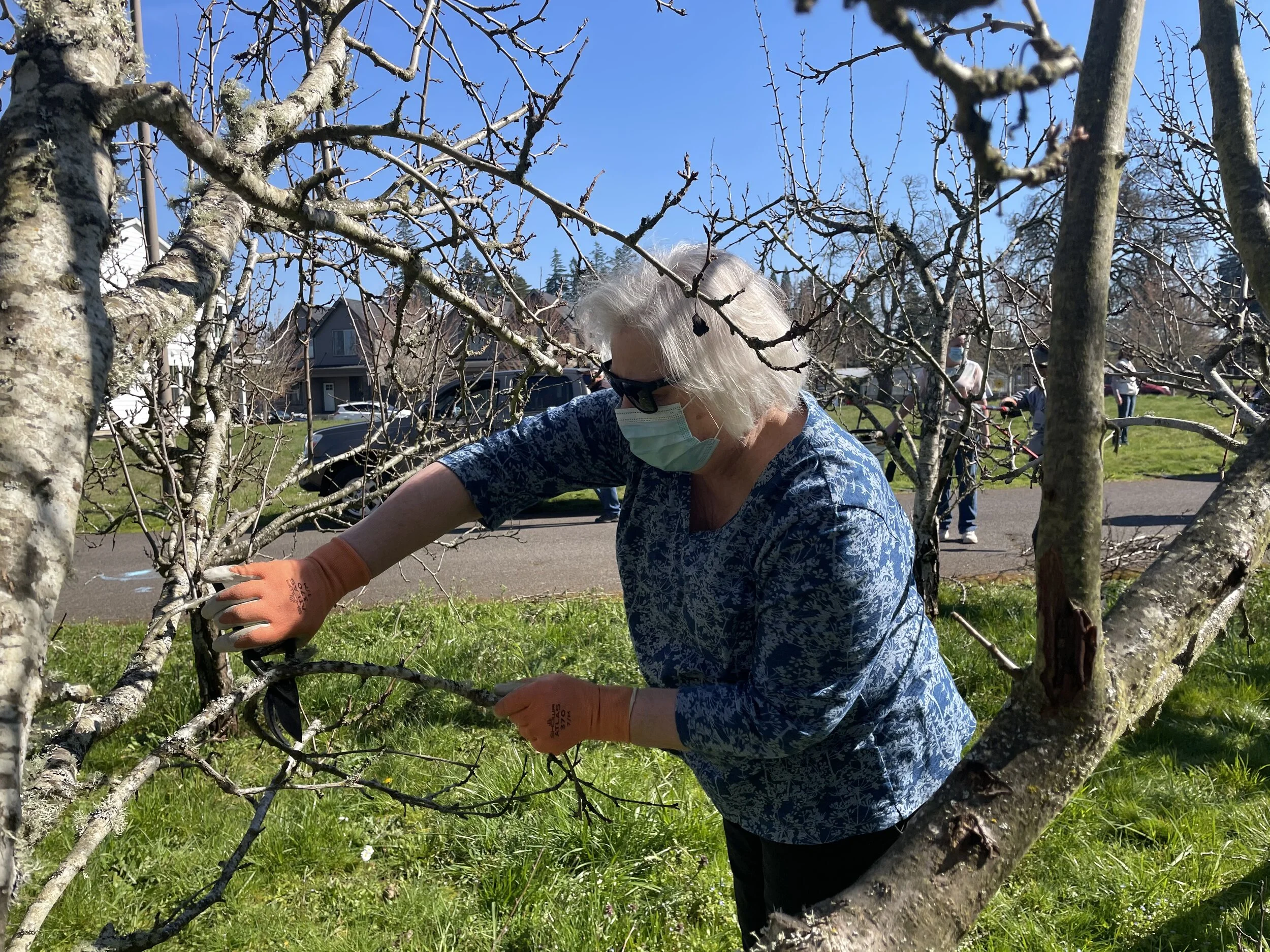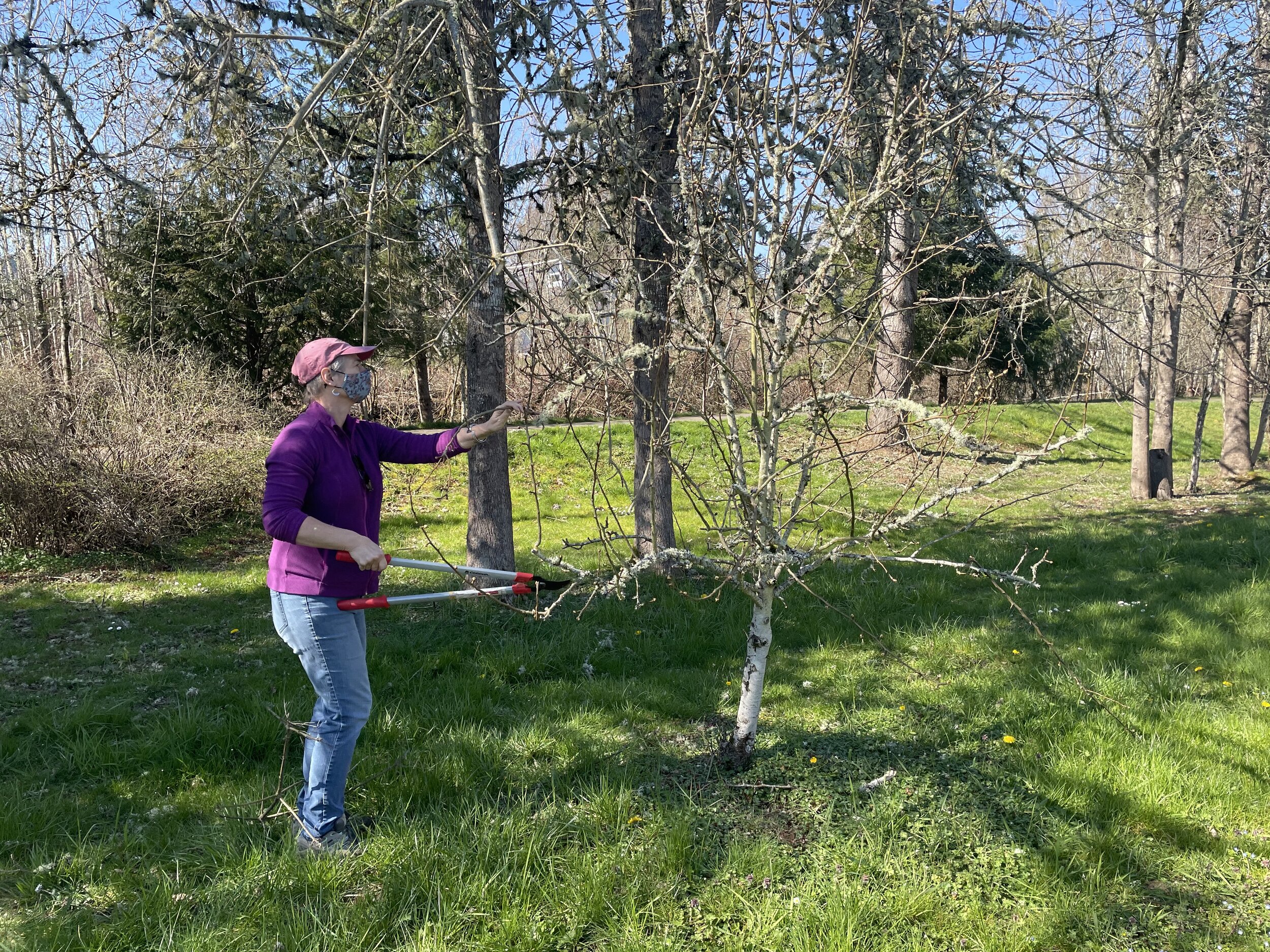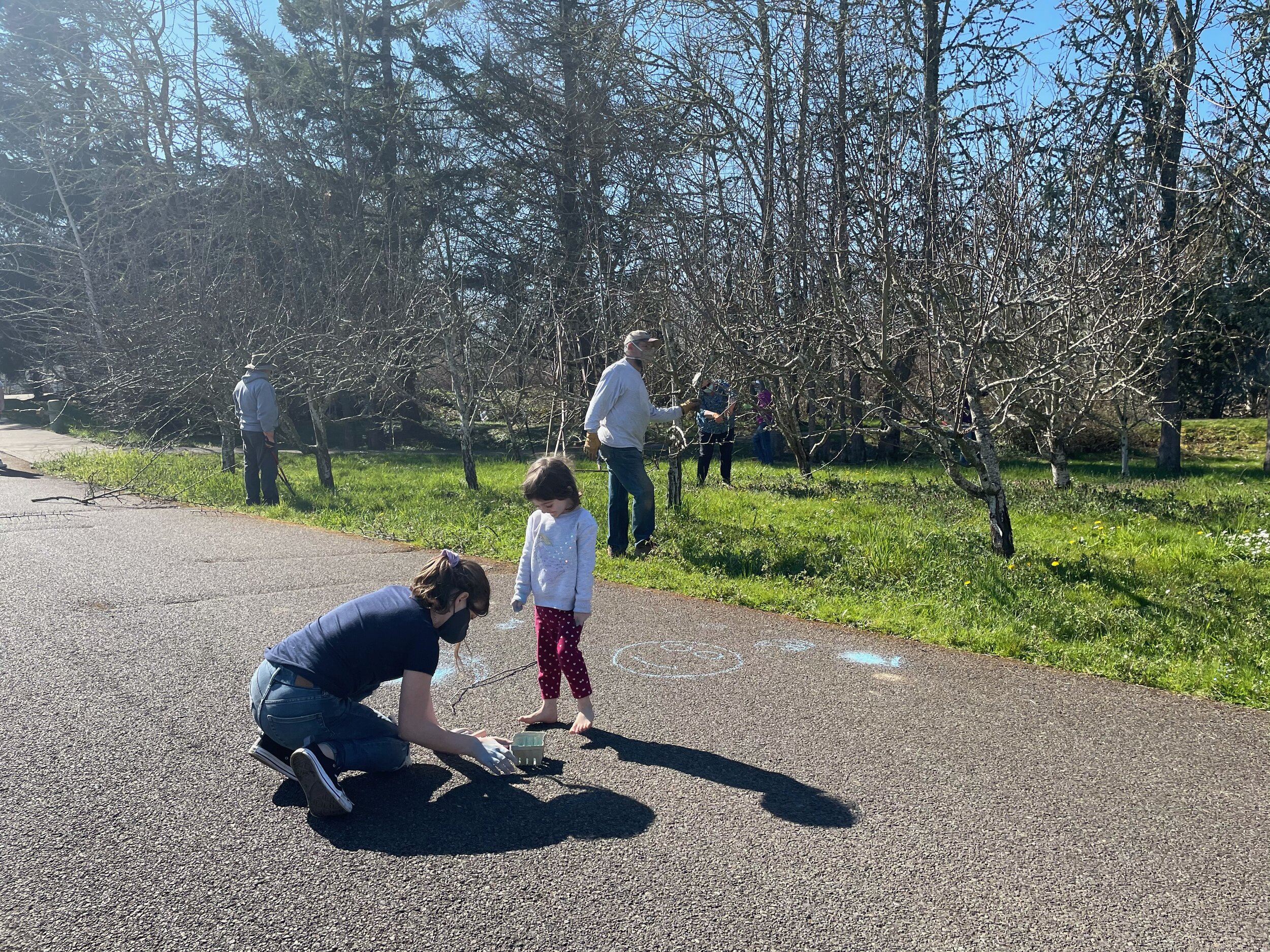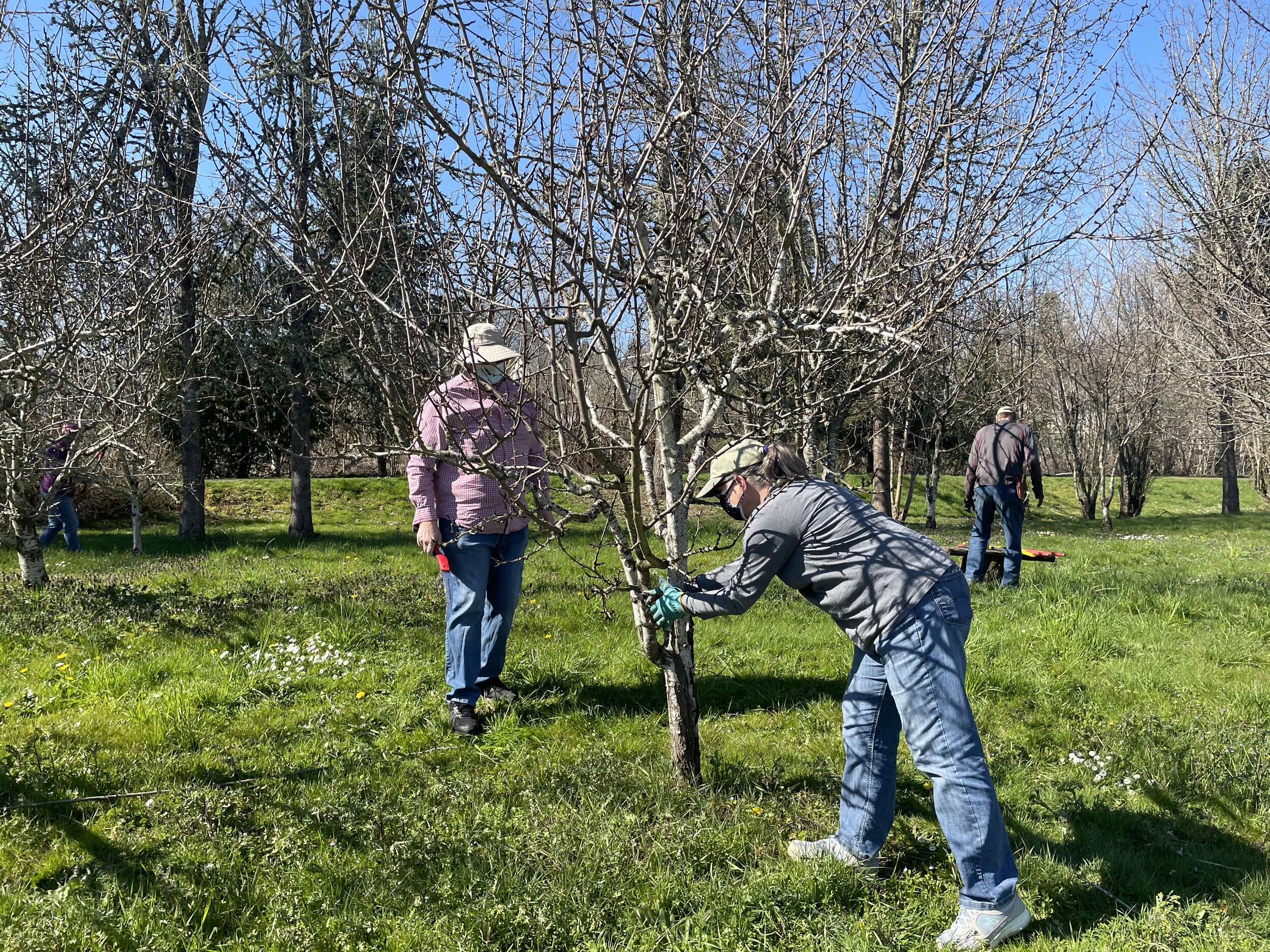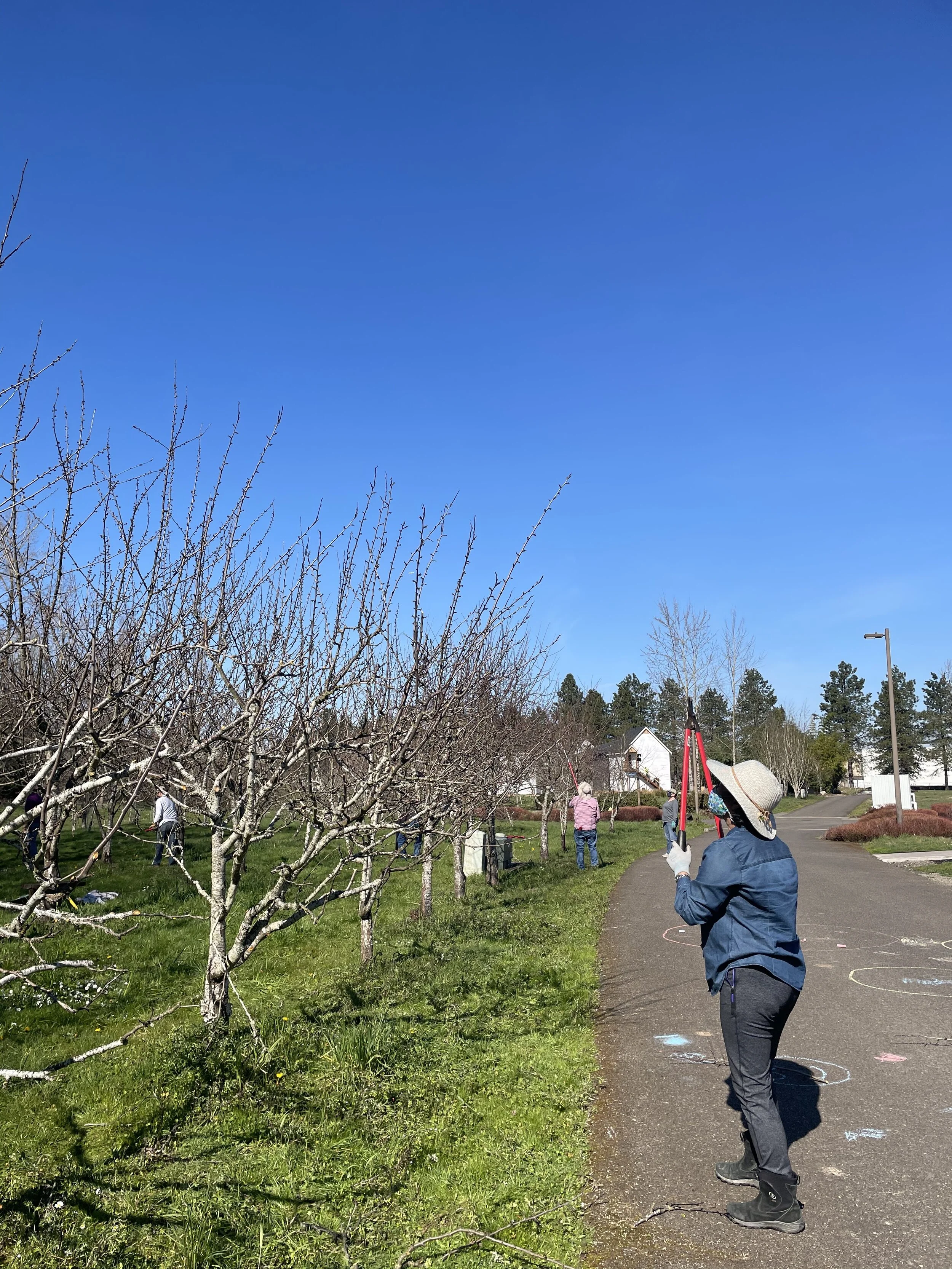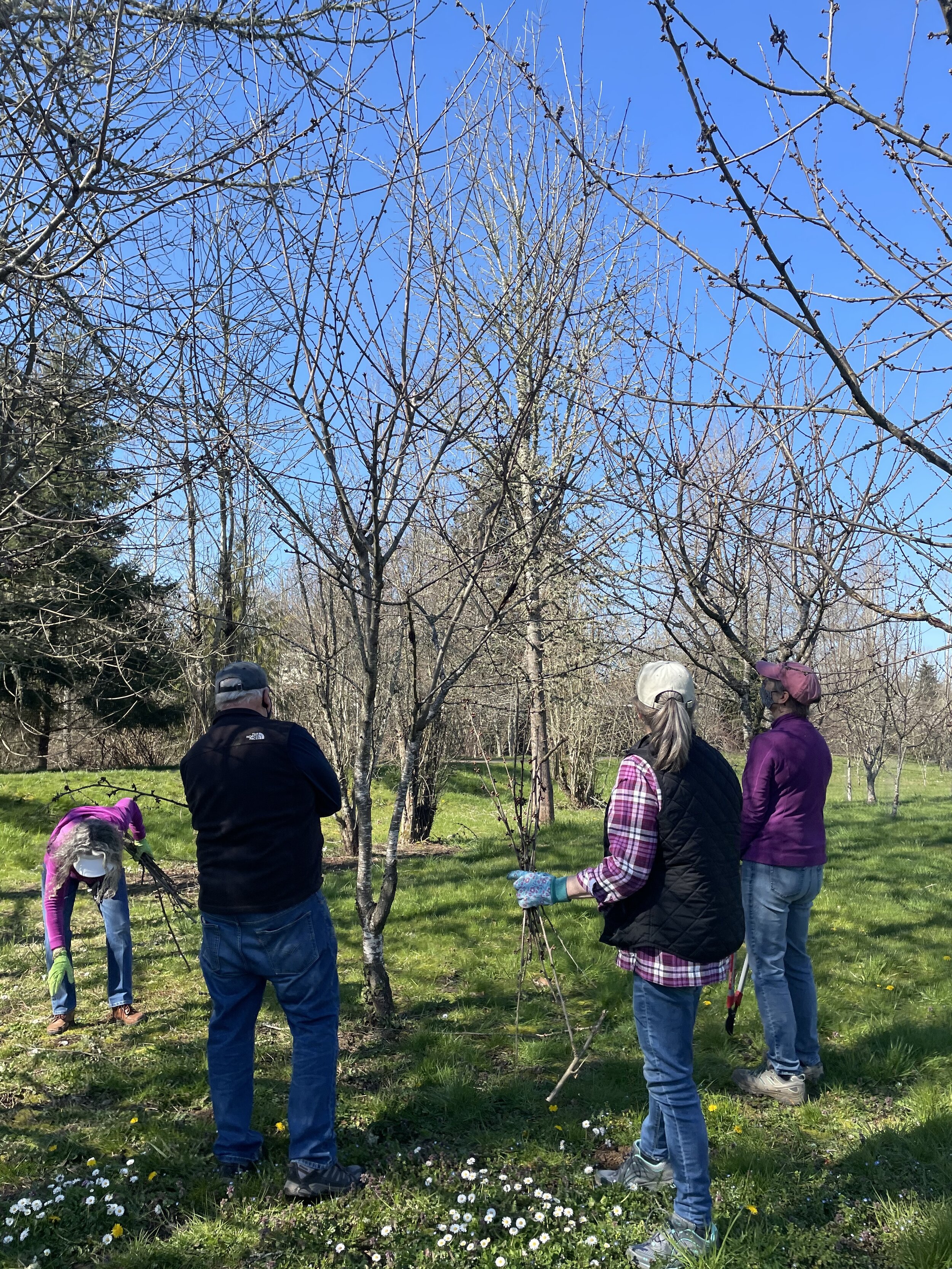There sure is a bit of Spring feeling in the air isn’t there!?! After our wild ice storm and then a bit more rain, Mother Nature seems content with flashing Spring at us … I couldn’t be happier right now with more sunshine and longer evenings to help make me feel like I can actually get my to-do list accomplished in a day.
Here at the Pringle Creek Community color is returning to the trees and shrubs and there is work to be done! One of the very special parts of this community is the Master plan that was created to protect this beautiful piece of land. We have a whopping 38% of green space in our community with naturally landscaped pocket parks, walking trails, orchards, berries, and gardens. The idea behind the master plan was a place designed around nature and community, with the highest efficiency homes, greenrooms to green streets to ground-sourced geo-thermal. Residents of the Pringle Creek Community care deeply about the environment and reducing their footprints for generations to come.
We have multiple orchards throughout the community that produce a bounty of delicious apples, plums, pears, peaches and cherries for community members and those who visit the Sustainable Living Center for our different classes and demonstrations. Unfortunately we are still operating under Covid-19 guidelines so we aren’t offering in-person classes just yet. Lucky for us though, we have all the community members we need to still get the work done.
While the birds sing, the sun shines and the critters emerge from Winter, here at the Pringle Creek Community it’s time to prune the fruit trees! We are so fortunate to have community members from so many walks of life and from so many different generations. We all love working together for the good of nature and the community (and yes, most definitely sometimes a nice glass of wine or craft beer!).
During one of the community meetings it came up that the orchards were a bit overgrown and needed some serious attention. While this can be an overwhelming task for a single person or couple, the community showed up with about a dozen volunteers to learn how to best prune the fruit trees and get to work doing so. We had individuals with pole saws, hand clippers and larger pruning clippers going from high to low on all the trees and then we had members going around picking up the fallen limbs and children playing with chalk and sometimes helping with picking up sticks (we’ll take what we can get).
During our time working together we learned it was definitely going to take more than just a few hours so additional community members will be back to keep up the good work and as community member Wilma says “giving these trees a much needed quarantine haircut” - because who can’t relate to that!?
When it comes to pruning fruit trees, you have several different opinions on when and how. For us, we chose to prune them after Winter and right after they started getting their tiny buds so we could easily see branches that were not going to produce and get them trimmed right away so they don’t take nutrients away from fruit bearing branches. There are also a few different cuts and reasons to cut to look for when addressing your own trees.
Water Spouts
These spouts you will find on branches shooting straight vertically
Crossing Branches
You don’t want your own tree competing with itself or other trees. Prune out crossing branches.
Hanging Branches
Any branches that sustained harm and are hanging need to be trimmed off for safety and health of the tree and to prevent rot issues.
Suckers
Suckers are the growth that comes from the bottom of the tree usually at the ground, robbing the tree of additional nutrients.
The type and angle of your cut also matters! I found this great article on Fix.com with beautiful illustrations for further instructions on how to make your cuts and what equipment works best.
So take a little walk outside and see what needs to be done. Invite some friends or family over (small crowds with masks more safety of course) and get-er-done!

